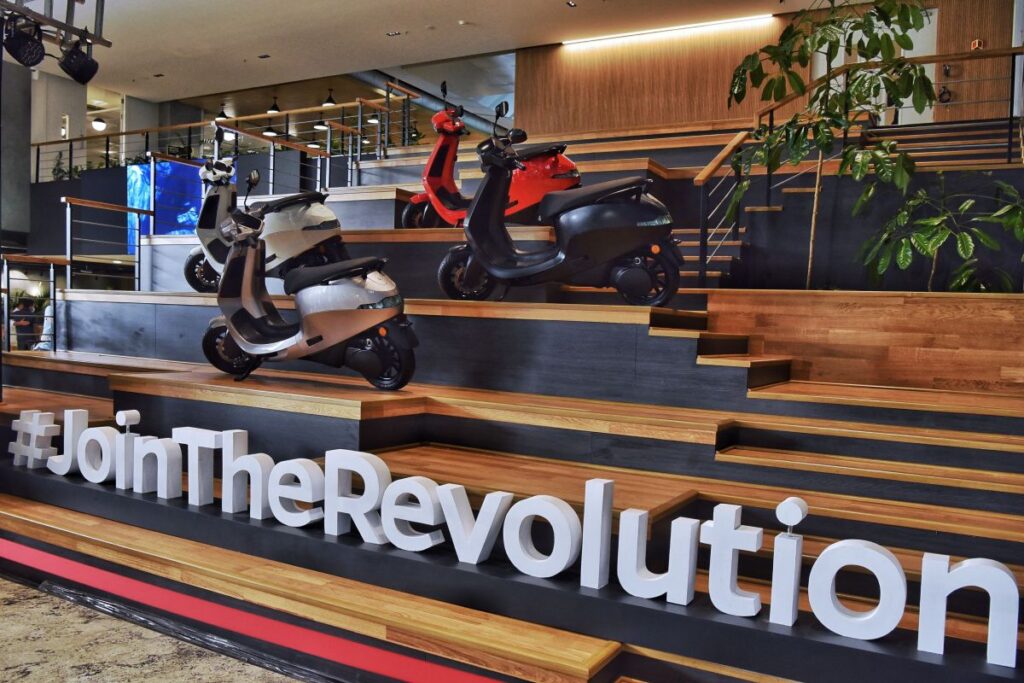Two of India's biggest startups, Ola Electric and FirstCry, are set to test investor appetite this month when they go public, but both have been forced to price their shares lower than their previous valuations as they adjust to new market realities.
Ola Electric, India's largest maker of electric two-wheelers, is selling shares for 72-76 rupees (86-91 cents) a share, seeking to raise more than $730 million, according to a term sheet. At that price, the company is valued at about $4 billion, 26% lower than the $5.4 billion valuation it received in an October 2023 funding round and well below the $6.5 billion-$8 billion range it initially targeted for its IPO. In fact, Ola Electric was valued at $5 billion in its January 2022 funding round.
FirstCry, the country's largest e-commerce platform for mother and baby products, is seeking to raise up to $501 million at a valuation of $2.9 billion, according to a term sheet. That's in line with its private valuation in the second half of 2023 but well below the $4 billion valuation it was aiming for last year and the $6 billion price it was targeting for 2022.
The more conservative stance reflects a shift in startup valuations as companies adapt to stock-market scrutiny. “Founders and boards of some companies are realizing the importance of hedging share price downside risk during an IPO and preserving value,” said Swapnil Sheth, director and partner at IndigoEdge, an investment bank that specializes in advising startups.
The right pricing “helps attract anchor investors, long-term public market investors, and retail investors to subscribe to the IPO,” he said, adding that attracting such investors increases the chances of increasing IPO profits and also leads to higher share prices after listing.
Ola Electric and FirstCry are yet to turn a profit: Ola Electric posted a loss of $189.2 million on revenue of $626.3 million for the fiscal year ending March 2024, while FirstCry posted a loss of $38.3 million on revenue of $774 million in the same period.
For some investors, the lower valuations will translate into lower returns. Tiger Global and Matrix Partners stand to profit from their early investments in Ola Electric, but more recent backers like Alpine Opportunity Fund and Tekne Private Ventures could take losses if the company goes public at this IPO price range. SoftBank, which has invested in both companies, stands to gain: a 48% gain in Ola Electric and more than $450 million in FirstCry, according to a TechCrunch analysis.
Ola Electric and FirstCry are following in the footsteps of insurance startup GoDigit, which also cut its valuation by 25% to $3 billion ahead of its May listing but has since risen to a market capitalization of $3.8 billion.
The IPO comes as Indian startups prepare for a wave of listings over the next two years.Tech companies that have listed in India since 2021 have seen mixed results, even as the benchmark Sensex index has risen more than 50% in three years.

“Several emerging IPOs have been trading below their IPO prices for an extended period of time. Stocks are also under selling pressure after the expiry of lock-in period,” Sheth said.
Indian companies are likely to raise about $11 billion through IPOs and FPOs in the second half of this year, analysts at Bank of America said in a recent client note. Hyundai, Ola, Swiggy and Afcons are on track to raise about $5 billion in 2024, the bank said.
Swiggy, which once led India's food-delivery market before being overtaken by rival Zomato, has also filed to go public. An investment bank had proposed selling a stake in Swiggy at a valuation of $10 billion, when Zomato had a market capitalization of $18 billion, according to a memo seen by TechCrunch. Swiggy last raised funds in January 2022 at a valuation of $10.7 billion.
“Contrary to industry jargon, I think calling an IPO an 'exit event' is a bit misleading. I believe an IPO is not an exit but the start of a journey for the next decade or even more, at least for the founders/promoters. They need to showcase a bigger vision and growth path to public market investors who will be tracking the company on a quarterly basis and scrutinising growth and profitability with even greater urgency,” Sheth said.



